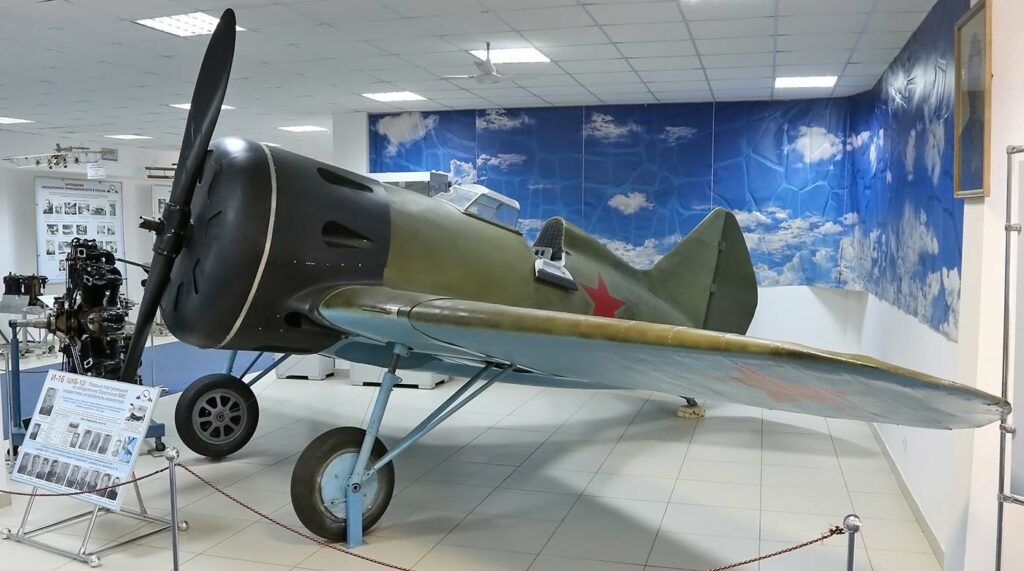The Polikarpov I-5, a 1930s Soviet biplane fighter, was known for its M-22 radial engine, maneuverability, and robust construction, serving as a key transitional fighter. This article delves into the Polikarpov I-5, examining its development, design, performance, and military usage. It highlights the aircraft’s role in transitioning Soviet fighter aviation from wood to metal construction and its significance in the early 1930s.
The Polikarpov I-5 was an important aircraft in the evolution of Soviet military aviation. As a mainstay fighter of the early 1930s, it marked a significant step in the development of Soviet aerial warfare capabilities. This article explores the development, design, performance, and operational history of the Polikarpov I-5.
History of the Development of the Polikarpov I-5:
In the late 1920s and early 1930s, the field of aviation was rapidly evolving, and there was a pressing need for more advanced military aircraft. The Soviet Union, keen on strengthening its air force, embarked on the development of the Polikarpov I-5 to replace older World War I-era fighters.
The project was led by Nikolai Polikarpov, a prominent Soviet aircraft designer. The development began with the objective of creating a robust, reliable, and agile fighter aircraft. The Polikarpov I-5 first flew in 1930, representing a significant advancement in Soviet fighter design.
This period was marked by a global transition in aircraft technology, moving from predominantly wood construction to incorporating more metal. The I-5 was developed in response to these technological advancements, aiming to provide the Soviet Air Force with a competitive fighter aircraft.
Design of the Polikarpov I-5:
The design of the Polikarpov I-5 was a reflection of the technological trends of its time. It was a single-seat biplane with a wingspan of 9.75 meters (32 feet) and a length of 6.75 meters (22 feet 2 inches). The I-5 featured a mixed construction, with a wooden frame and metal skin in critical areas.
Powered by a Soviet-built M-22 radial engine, a license-produced version of the British Bristol Jupiter, the I-5 was capable of producing around 480 horsepower. This engine choice contributed significantly to the aircraft’s performance and reliability.
The I-5’s design included several innovative features for its time, such as an open cockpit, fixed landing gear, and a simple, robust structure. However, as a biplane, its maximum speed and altitude capabilities were limited compared to later monoplane designs.
Despite these limitations, the I-5 marked a significant step in the evolution of Soviet fighter aircraft, particularly in terms of its robust construction and operational reliability.

Performance of the Polikarpov I-5:
In terms of performance, the Polikarpov I-5 was notable for its era. The M-22 engine enabled a top speed of around 253 km/h (157 mph), with a service ceiling of about 7,100 meters (23,300 feet) and a range of approximately 500 kilometers (310 miles).
Compared to contemporaries such as the American Boeing P-26 Peashooter or the British Hawker Fury, the I-5 was competitive in terms of maneuverability but lagged slightly in speed due to its biplane design. Nonetheless, its robust construction and operational reliability were well-regarded.
Military Use and Combat of the Polikarpov I-5:
The Polikarpov I-5 saw extensive service in the Soviet Air Force during the early 1930s. Its primary armament consisted of two PV-1 machine guns, providing effective firepower for its role as a fighter.
While the I-5 did not see major combat, it played a crucial role in the modernization of the Soviet Air Force and was involved in various smaller conflicts and border skirmishes. Its reliability and ease of maintenance made it a valuable asset in these operations.
The aircraft was eventually replaced by more advanced designs, such as the Polikarpov I-16, as aviation technology progressed. However, its influence on Soviet fighter aircraft design was significant.
The Polikarpov I-5 was an important aircraft in the history of Soviet military aviation, marking a transition from older biplane designs to more modern aircraft technology. Its robust design, reliable performance, and role in early Soviet air force operations underscore its importance in the development of Soviet military aviation. While it was eventually superseded by more advanced models, the I-5’s legacy in influencing subsequent aircraft designs remains a significant chapter in aviation history.
Back to the Warbirds section.